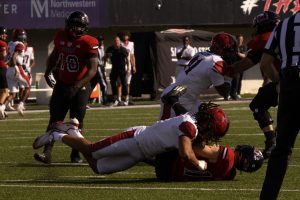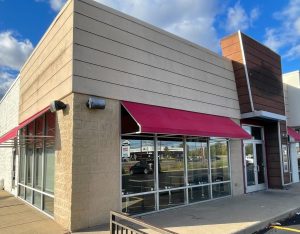Ill. might get atom smasher
February 6, 1987
The approaching completion of Byron nuclear station should help bring President Reagan’s “supercollider” program to Northern Illinois.
According to Robert Dwyer, Nuclear Spokesperson for Commonwealth Edison, a major consideration in locating a project of this size is ready access to an electricity supply that is both large and reliable.
Dwyer said a significant advance in the capacity to meet those energy needs was made on Jan. 30, when the Nuclear Regulatory Commission authorized the operation of Commonwealth Edison’s Byron Station II nuclear reactor at full power.
ComEd Chairman and President James O’Connor said the NRC’s approval marked “another important milestone in the construction program we began in the early 1970s. When this program is complete in 1988, ComEd will be serving its 3 million Northern Illinois customers with one of the most modern, efficient systems in the country.”
Dwyer said completion of its nuclear program will mean ComEd is capable of providing one of the most modern, reliable and efficient sources of electricity.
On the same day Byron received authorization, Energy Secretary John Herrington announced President Reagan will seek funds to build the nuclear particle “supercolliding superconductor,” the world’s largest atom smasher.
Margaret Pearson of Fermi-National Accelerator Laboratory’s Public Information Office, said “Illinois is mounting a very aggressive campaign to have the supercollider project brought here.” She said Illinois is a “leading contender” in the competition for the project.
The Illinois site proposed is in the far western suburbs of Chicago alongside Fermi-Lab near Batavia. ComEd spokesperson J. Thomas McIntire said the close proximity of Fermi-Lab in addition to the ample electricity supply are both factors making Illinois an ideal site. The 52-mile underground oval tunnel of the new supercollider would adjoin te existing 4-mile tunnel at Fermi-Lab.
McIntire said approval by the NRC to operate at full power is like getting a clean bill of health. He said it is a signal that all regulations have been met and the nuclear power program should continue forward.
According to McIntire, the program will enable ComEd to meet the tremendous electric energy need of the “supercollider” project. “The reliability of our generating has been enhanced significantly; the new system is not affected by weather conditions or strikes the way a coal-fire electric plant would be,” McIntire said.
DeKalb Mayor Greg Sparrow expressed optimism the supercollider would be located in Illinois. He said the project would create a tremendous number of jobs not only in the construction phase, but in the technical areas, and those would be permanent jobs.”
Sparrow said in addition to the proximity of Fermi-lab and the ample electricity supply, there is access to a great transportation network. He said there are so many advantages to locating the supercollider in Illinois, “they would be fools not to locate it here.”






